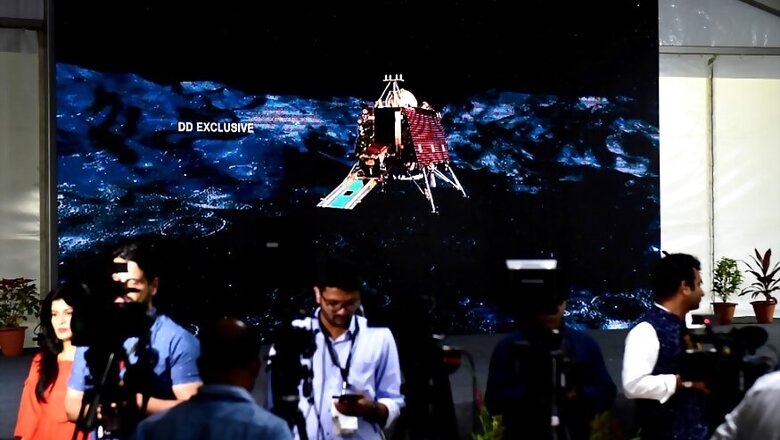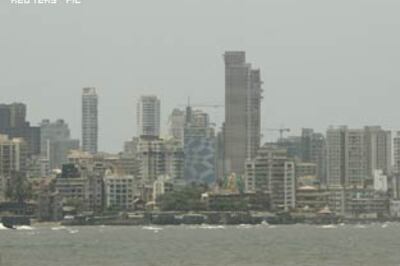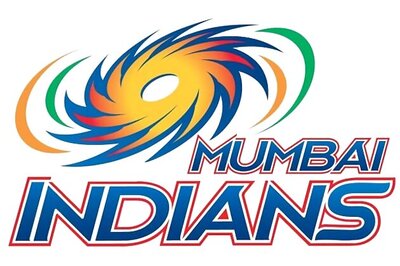
views
Chandrayaan 2 Live Updates: ISRO is continuing its efforts to restore link with Chandrayaan-2’s lander ‘Vikram’, but experts say time is running out and possibility of re-establishing communication looks “less and less probable.”
Chairman of Indian Space Research Organisation K Sivan said on Saturday that the space agency will try to establish link with the lander for 14 days. After lander Vikram was located on the lunar surface by Chandrayaan-2’s on-board cameras on Sunday, he reiterated that those efforts would continue. A senior official associated with the mission said, “Progressively… as time goes by… it’s difficult(to establish link)”
Chandrayaan 2 orbiter has located the lander Vikram on the lunar surface and beamed its first picture back to the Indian Space Research Organisation (ISRO), the space agency’s chief K Sivan told CNN-News18, a day after the lander dealt a blow to the moon mission and went incommunicado while attempting soft landing on the moon. Sivan, however, said communication is yet to be established. “We have found the location of Vikram Lander on lunar surface and the orbiter has clicked a thermal image of the lander. But there is no communication yet. We are trying to have contact,” Sivan said. He added that it must have been a hard-landing, but it was not yet clear if the Vikram module was damaged.
Despite the setback yesterday, ISRO says 90 to 95 per cent of the Chandrayaan 2 mission objectives have been accomplished and it would continue contributing to lunar science despite the loss of communication with the lander. The space agency also said the precise launch and mission management had ensured a long life of almost seven years instead of the planned one year for the orbiter. NASA, too, has lauded Chandrayaan 2, saying India’s moon mission has “inspired” the US space agency which is keen to jointly explore the solar system with ISRO.
India’s bold mission to soft-land on moon suffered a setback during the wee hours on Saturday, with Chandrayaan 2 Vikram module losing communication with ground stations, just 2.1 km from the lunar surface during its final descent.
“The Vikram Lander followed the planned descent trajectory from its orbit of 35 km to just below 2 km above the surface. All the systems and sensors of the Lander functioned excellently until this point and proved many new technologies such as variable thrust propulsion technology used in the Lander,” ISRO said in an update.
“Space is hard. We commend ISRO’s attempt to land their Chandrayaan2 mission on the Moon’s South Pole,” the National Aeronautics and Space Administration (NASA) said in a tweet. Former NASA astronaut Jerry Linenger told PTI on Saturday that the lessons learnt from India’s “bold attempt” to soft land Chandrayaan 2’s Vikram module on the lunar surface will help the country during its follow up missions.
The success criteria was defined for each and every phase of the mission and till date 90 to 95 per cent of the mission’s objectives have been accomplished and it would continue contributing to lunar science , notwithstanding the loss of communication with the Lander, it said. The successful landing would have made India the fourth country after Russia, the US and China to achieve a soft landing on the moon, also the first to launch amission to the unexplored south pole of the Moon.
Pointing out that the orbiter has already been placed in its intended orbit around the Moon, ISRO said, “It shall enrich our understanding of the moons evolution and mapping of the minerals and water molecules in the Polar Regions, using its eight state-of-the-art scientific instruments.”
“The orbiter camera is the highest resolution camera (0.3m) in any lunar mission so far and shall provide high resolution images which will be immensely useful to the global scientific community,” it said, adding that the precise launch and mission management has ensured a long life of almost 7 years instead of the planned one year.
The Chandrayaan 2 orbiter is healthy and safe in the Lunar orbit, an ISRO official had said after the Vikram Lander lost contact with ground stations minutes before the touchdown on Moon’s surface.
Stating that Chandrayaan 2 mission was a highly complex mission, which represented a significant technological leap compared to the previous missions of ISRO, the space agency said it brought together an Orbiter, Lander and Rover to explore the unexplored south pole of the Moon.
Since the launch of Chandrayaan 2 on July 22, not only India but the whole world watched its progress from one phase to the next with great expectations and excitement, it said.
This was a unique mission which aimed at studying not just one area of the Moon but all the areas combining the exosphere (outermost layer of the earth’s atmosphere), the surface as well as the sub-surface of the moon in a single mission, it added.
Read all the Latest News , Breaking News , watch Top Videos and Live TV here.


















Comments
0 comment